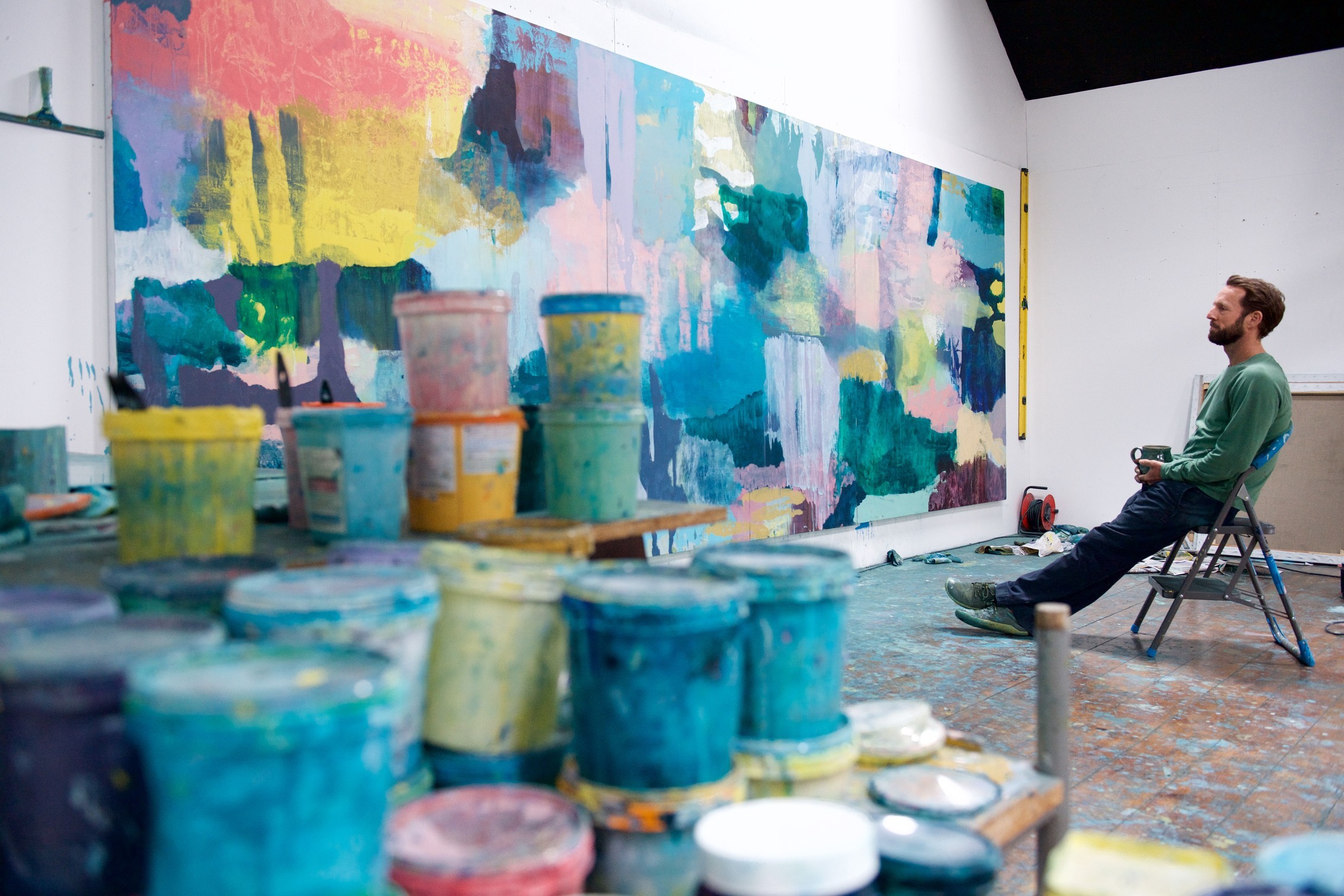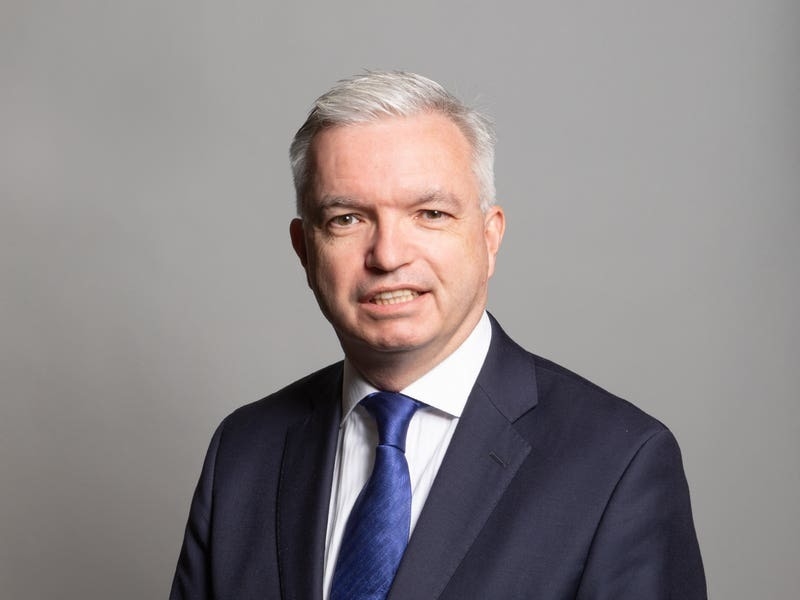A WORD of advice to anyone visiting Jason Butler’s forthcoming exhibition of collages and gouaches in his Commercial Buildings studio next month – don’t tell the artist how rapidly his work seems to have changed.
‘For other people it will feel like a big change but for me it’s been six days a week for 2½ years, so it’s not been a quick change,’ he says with some feeling. He acknowledges that the new show may feel different to his last more than two years ago when he was showing mostly large scale canvases, the gallery filled with 12 large pictures. This time there will be about 50 smaller works on paper.
But thinking about the obvious differences will send the viewer off on the wrong track for another, more important, reason. While Jason Butler has always striven to discover something new in the act of painting, there has been a logic to the way his work has developed since his prominent Seekers exhibition five years ago which was dominated by human figures.
‘Halfway through that exhibition, I knew that everything was going to change even before the show was down. The two years leading up to my last show were all about trying to make the paintings more autonomous objects instead of trying to rely on a literal reading of something.
‘I became less and less interested in having a message for people and much more interested in the magic of painting. The last show was about me learning to create paintings that were about time and space and light. I wasn’t quite ready then to relinquish entirely what the figures brought to the work in a formal sense in that they were the pivot that everything hung on. But there were three abstract paintings in that show, two of which have been destroyed and one sold.
‘The one that sold was a really important painting which was the way forward. I knew within a few days of the show that I was only thinking of that painting. I was done with everything else,’ he said.
Back in the studio, he produced work even larger in scale – four diptychs and an 18-foot long triptych – the challenge being to get away from the literal to make this new work ‘resonate’ in front of the eyes.
‘I’m trying to hit the magic point of it a bit like certain music I listen to – something like Bach’s cello suites, for instance. When you really listen, they are so layered that there are certain moments where for the life of me I don’t understand how it’s doing what it’s doing, and I can’t get my head around where the magic is but it’s there,’ he said.
To try to find such magic – a word which he increasingly uses as shorthand for something that does not translate easily into words – the artist must keep his own ego out of the creative process. In the intensive period of work that coincided with lockdown, Jason explained that he has been ‘trying to get out of my own way’.
Sometimes he has taken a day off – something which will surprise those who know how disciplined his approach is – and gone for a swim at Archirondel, or simply sat and had breakfast to ‘help see things for what they are and not how you want them to be’.
Increasingly his attention has turned to the latest smaller works – the collages and gouaches that will make up the new show. They occupy a fascinating place in his output, integral to his creative practice. They are what he calls his ‘visual alphabet’, the building blocks of the larger pieces.
‘They are works in their own right. I made them to help me think through what I was trying to do – the shapes and so on – and then the big paintings responded and went off in their own direction.
‘Initially, they were really playful and I wasn’t thinking they were going to become as important as they have been. Now they are very much pieces in their own right. I don’t see them as being subservient to the big paintings in any way but they both inform them and say something in their own right.
‘I still think they are very playful but have a serious intent, too. The phrase ‘serious joy’ is in my head at the moment because that’s where I’m at now. I enjoy the focus of things but I’m at my happiest where you have to learn about yourself in the process.’
What he describes as an important factor in the creation of his recent work has been the professional relationship he has developed with Jill Silverman van Coenegrachts, who is his agent but also his mentor. He hopes it will lead to a wider European audience for his work once more normal patterns of life are restored but in the meantime online meetings have afforded the opportunity for a ‘constructive dialogue’ with someone whose opinions he respects.
‘We talk more about Fra Angelico and certain paintings by Giotto, and what those paintings are doing in relation to what I’m trying to do – their surface and if they are emanating light. She will also remind me to get out of my own way.
‘If you want to make work that just repeats itself, that’s fine – it’s up to everyone what they want to do but if you want to make better work that’s almost beyond your own understanding, you have to go to uncomfortable places,’ he said.
To speak about his own work inevitably poses a problem: the artist’s challenge lies not in how well he or she can talk about what they are doing but in the success of their work. ‘For everything I say,’ Jason observes, ‘I’m also aware that I could disagree with myself in the next hour.’ Yet, in spite of this, he offers one very clear pointer to the way that things have moved on.
‘What I’m trying to do specifically when you are in front of any of my paintings is to get the work to enter your space – it’s not like looking through a window at something. In the Seekers show you were looking into a world which wasn’t your own world, somewhere outside of you.
‘With these, after a while of absorbing the painting, what I hope is that the forms start to hover – it’s almost like you are enveloped by them. They start to enter your space if you are quiet in front of them. That’s hopefully where the magic comes in. The earlier pictures were dipping your toe in – this is jumping in,’ he said.
‘Content is really important to me but if you ask me to explain the content that’s really difficult because it’s everything – it’s studying art history for the best part of 35 years, it’s swimming every day – the memory of certain bits of light when you take you head out of the water, it’s the colour, it’s the sheer physical joy and meeting up with your mates and cycling back, shivering cold.
‘It’s not a specific thing any more – it’s trying to allow all this built-up experience to be the content, while understanding that the physical business of making the painting is the content itself,’ he said.
- Jason Butler’s new exhibition at his studio at Commercial Buildings will be open to the public from Monday 12 July to Saturday 24 July (closed on Sundays) from 10am to 5.30pm.






